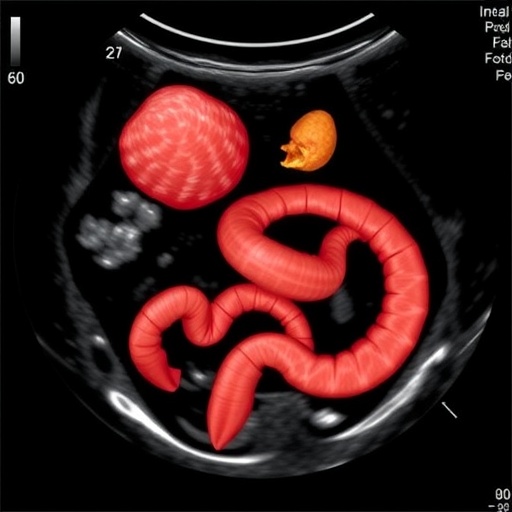PROTECT YOUR DNA WITH QUANTUM TECHNOLOGY
Orgo-Life the new way to the future Advertising by AdpathwayIn the intricate battle against breast cancer, immune cells residing within tumors—known as tumor-infiltrating lymphocytes (TILs)—play a critical role in determining disease outcome. A groundbreaking study published in BMC Cancer delves deep into the dynamic interplay between two pivotal TIL subtypes in invasive ductal carcinoma (IDC) of the breast: CD8+ cytotoxic T cells and FOXP3+ regulatory T cells (Tregs). This research illuminates how these immune cells influence tumor progression and patient prognosis, marking a significant leap forward in personalized cancer immunotherapy.
Breast cancer’s immune landscape is complex, with TILs comprising a diverse array of lymphocytes performing vastly different roles. CD8+ T cells are recognized as the immune system’s frontline warriors against cancer, capable of directly attacking and killing tumor cells. Conversely, FOXP3+ Tregs function more like peacekeepers, dampening excessive immune reactions to maintain balance but inadvertently creating an immunosuppressive microenvironment that can shield tumors from destruction.
The recent investigation analyzed 96 histologically confirmed cases of IDC, representing a substantial cohort for studying patterns of lymphocyte infiltration. Researchers meticulously examined the expression levels of CD8 and FOXP3 markers within tumor tissues, using sophisticated immunohistochemical techniques. By correlating these expression patterns with clinicopathological factors such as tumor size, histological grade, hormone receptor status (estrogen and progesterone receptors), HER2/neu expression, and Ki67 proliferation index, the study sought to unravel the nuanced relationship between immune cell infiltration and tumor characteristics.
A striking feature of the findings is the discovery of an inverse correlation between CD8+ and FOXP3+ TIL densities within tumors. This suggests a tug-of-war dynamic whereby high levels of cytotoxic, anti-tumor CD8+ cells tend to align with low immunosuppressive FOXP3+ cells, and vice versa. Specifically, the study reported a Pearson correlation coefficient of −0.508 between these populations, statistically significant at p = 0.002. Such a balance may critically dictate whether an immune response will effectively control tumor growth or instead foster cancer persistence.
Further elucidating this immunological seesaw, investigators observed that the overall TIL levels positively correlated with CD8+ T cell infiltration (Pearson = 0.419, p < 0.001). This indicates that robust TIL presence is largely reflective of active cytotoxic immune engagement, reinforcing the concept that CD8+ T cells are primary drivers of anti-tumor immunity in breast cancer. Contrastingly, FOXP3+ Treg infiltration closely aligned with the FOXP3/CD8 ratio (Pearson = 0.751, p < 0.001), underscoring the potent immunosuppressive milieu fostered by Tregs when prevalent.
These insights highlight the dual-edged nature of immune involvement in breast cancer. While CD8+ T cells herald a favorable prognosis with their tumor-killing capabilities, FOXP3+ Tregs create hurdles by mitigating immune responses and potentially enabling tumor evasion. The relative proportions of these cell subsets—and their ratio—may therefore hold the key to predicting disease progression and tailoring therapeutic approaches.
Notably, prior investigations into TIL roles in breast cancer have yielded conflicting results, partly due to population heterogeneity and methodological differences. This study is among the first from India to provide detailed immunohistochemical assessment of CD8 and FOXP3 expression in IDC, filling a critical gap in regional oncological immunology research. Given the diverse genetic and environmental backgrounds influencing cancer biology, such localized studies are invaluable.
The clinical implications extend beyond mere prognostication. The FOXP3/CD8 ratio emerges as a potential biomarker to stratify patients who might benefit from specific immunotherapies. For instance, patients with a high FOXP3/CD8 ratio indicating an immunosuppressive tumor microenvironment may require interventions targeting regulatory T cells or modulators that restore cytotoxic T cell activity.
Moreover, integrating FOXP3 and CD8 immunoprofiling with established prognostic markers like hormone receptors and HER2 status could refine breast cancer classification systems. This multidimensional approach promises to advance personalized medicine, enabling oncologists to design tailored regimens that harness or modulate the patient’s endogenous immune response in conjunction with other treatments.
The study also emphasizes the importance of meticulous tumor sampling and precise immunohistochemical assessment to capture the heterogeneous distribution of TILs within breast cancer tissues. This ensures reliable data supporting robust conclusions and paves the way for future research applying digital pathology and machine learning for automated immune cell quantification.
Furthermore, understanding the biological mechanisms underpinning the reciprocal relationship between CD8+ and FOXP3+ cells could unveil new drug targets. Research suggests that tumors may secrete factors that recruit Tregs or inhibit CD8+ T cells, thus actively sculpting an immune-evasive niche. Interrupting these signaling pathways might restore effective immune surveillance.
The findings resonate with the expanding paradigm shift positioning the tumor microenvironment, and specifically immune contexture, as a cornerstone of cancer biology. This challenges the traditional focus solely on tumor genetics by layering in the critical dimension of host immunity and its influence on therapy responsiveness.
In light of emerging immunotherapies, including checkpoint inhibitors and adoptive T cell transfer, detailed immunophenotyping of TILs becomes indispensable. Such biomarker-driven strategies could optimize patient selection, monitor therapeutic response, and anticipate resistance mechanisms to maximize clinical benefit.
This endeavor exemplifies how coupling clinical oncology with immunology can unravel disease complexity and open avenues to innovative treatment approaches. By decoding the molecular conversations between cancer cells and immune infiltrates, researchers are forging paths toward more effective, personalized breast cancer care worldwide.
Ultimately, the study by Fathima, Suresh, and Kattepur not only advances scientific understanding but also signals a beacon of hope. As breast cancer continues to challenge millions globally, integrating immune insights into clinical strategies promises to enhance survival and quality of life for patients facing this formidable adversary.
Subject of Research: Immunohistochemical profiling of tumor-infiltrating lymphocytes CD8 and FOXP3 in invasive ductal carcinoma of the breast and their correlation with clinicopathological parameters.
Article Title: Immunohistochemical expression of tumor-infiltrating lymphocytes CD8 and FOXP3 in invasive ductal carcinoma of breast.
Article References:
Fathima, Z.S., Suresh, T.N.R. & Kattepur, A.K. Immunohistochemical expression of tumor-infiltrating lymphocytes CD8 and FOXP3 in invasive ductal carcinoma of breast. BMC Cancer 25, 1550 (2025). https://doi.org/10.1186/s12885-025-14892-5
Image Credits: Scienmag.com
DOI: https://doi.org/10.1186/s12885-025-14892-5
Tags: cancer immunotherapy advancementsCD8 T cells and FOXP3 TregsCD8+ cytotoxic T cell functionclinicopathological factors in breast cancerhistological analysis of breast tumorsimmune landscape of breast cancerinvasive ductal carcinoma researchlymphocyte infiltration patternspersonalized cancer treatment strategiesregulatory T cells in cancertumor microenvironment and immune responsetumor-infiltrating lymphocytes in breast cancer


 6 hours ago
7
6 hours ago
7





















 English (US) ·
English (US) ·  French (CA) ·
French (CA) ·